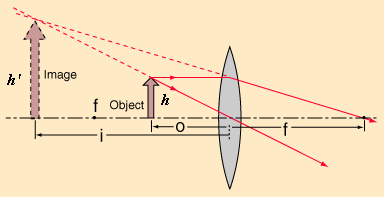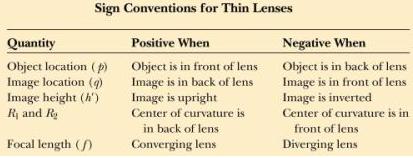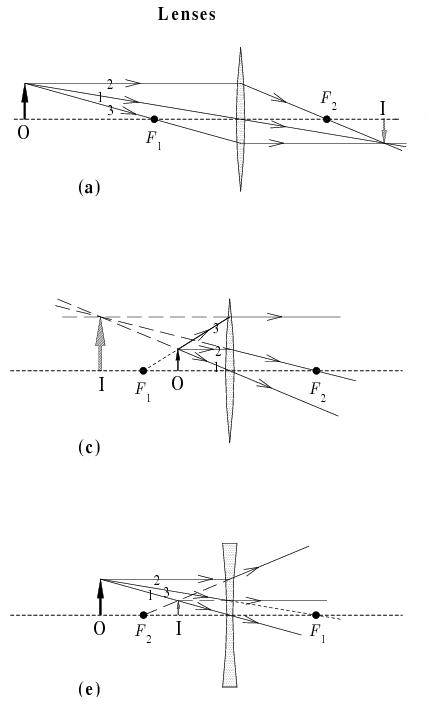Question #4b0ff
1 Answer
I think that this is a converging lens creating a virtual image bigger than the object (a diverging one would produce an erect image but smaller than the object). The image is erect (I suppose having the same orientation of the object) and placed at 12 cm from the lens.
Graphically:

(Picture source: http://hyperphysics.phy-astr.gsu.edu/hbase/geoopt/raydiag.html)
I´ll use the following equations:
1) Distances:
2) Magnification:
I start using the Magnification:
Where:
Now I use the focal length formula:
Where:
Giving:
and
Note:
In this exercise I used the following conventions:

(Picture source: www.physics.uc.edu)
To decide which configuration to use in the relative positioning of object, image and lens I used reference diagrams such as:

(Picture source: www.physics.uc.edu)
Where I can deduce the characteristics of the system (magnification, orientation, etc.).

